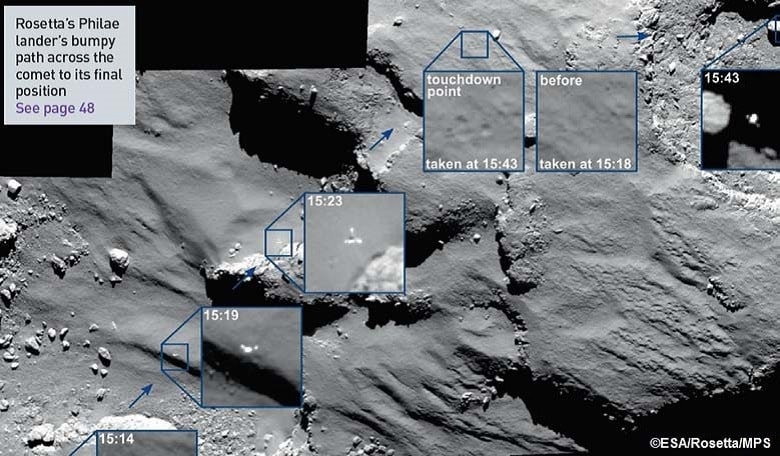After an unplanned 30-minute bounce as it landed on the surface of Comet 67P, Philae, the little 100kg sub-probe to ESA’s Rosetta spacecraft, finally settled down to transmit information and photos on 12 November 2014. It had landed 1 km off target after its harpoon and screw mechanisms failed to hold it down on what turned out to be a relatively hard rock and ice surface of the comet. Battery power was soon lost because of its awkward angle and position in shadow, but ESA officials were delighted with the initial 80 per cent data stream success. It is hoped that the sleep-mode that Philae is in may change and, once sunlight is received to on-board solar panels, the lander may recharge its batteries, reboot computers and carry on its future work. Organic molecules are a key search objective focus of the mission.
Rosetta comet success SpaceShipTwo











